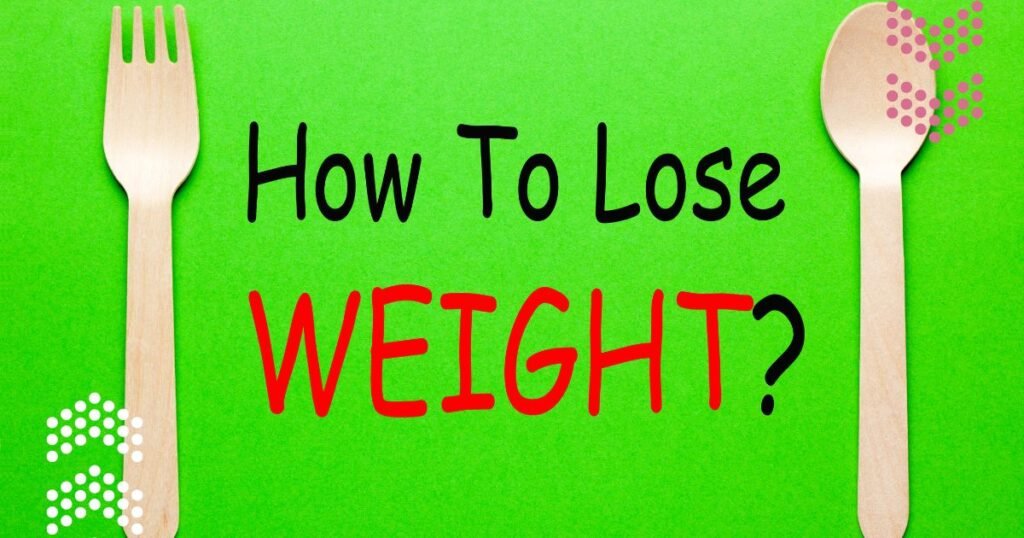Weight loss can often feel like a frustrating cycle of initial success followed by plateaus. For women, this journey is especially challenging due to a biological phenomenon known as adaptive thermogenesis. This process is the body’s natural response to weight loss, where it conserves energy to prevent further fat reduction.
Understanding how adaptive thermogenesis affects women’s weight loss efforts is critical for long-term success. It not only explains why progress slows down but also provides insight into how to navigate these obstacles. In this article, we’ll explore what adaptive thermogenesis is, the science behind its occurrence in women, and practical strategies to combat it.
What is Adaptive Thermogenesis?
Definition of Adaptive Thermogenesis
Adaptive thermogenesis refers to the reduction in the body’s energy expenditure in response to calorie restriction. When women reduce their caloric intake to lose weight, the body instinctively begins to conserve energy by burning fewer calories.
It is the body’s survival mechanism, dating back to times when food scarcity was a common challenge. By adjusting how many calories it uses, the body can slow down weight loss or even stop it altogether. This is particularly challenging for women, as their bodies are predisposed to storing fat for reproductive purposes, further intensifying the effects of adaptive thermogenesis.
Adaptive Thermogenesis vs. Regular Metabolism
While it’s normal for your metabolism to slow down when you lose weight, adaptive thermogenesis is a more extreme reduction in calorie burning. Regular metabolism decreases when you weigh less because a smaller body requires fewer calories to function. Adaptive thermogenesis, however, goes beyond this and is a deliberate attempt by the body to stop weight loss.
For women, this effect is often more pronounced than in men due to hormonal differences and the natural biological imperative of maintaining sufficient energy reserves for reproduction. Understanding this distinction is key to addressing the unique challenges women face during their weight loss journeys.
The Science Behind Adaptive Thermogenesis in Women
Hormonal Influence
Women’s bodies are heavily influenced by hormonal fluctuations, especially estrogen and progesterone. These hormones play a significant role in fat storage and the body’s response to calorie restriction. Estrogen, for instance, tends to increase fat storage, particularly around the hips and thighs, as a biological safeguard for pregnancy and breastfeeding.
When women begin losing weight, their estrogen levels decrease, leading to a more aggressive adaptive thermogenesis response. The body, sensing a potential threat to reproductive functions, initiates mechanisms to preserve fat and energy stores.
The Role of the Reproductive System
Women’s reproductive systems further complicate the weight loss process. In contrast to men, women’s bodies are designed to conserve more energy to maintain fertility. The reproductive system requires energy for ovulation, menstruation, and potential pregnancy, which means the body is less willing to burn through fat stores.
Adaptive thermogenesis ensures that the body retains sufficient fat reserves to support reproductive health, even when caloric intake is reduced. This is why women may experience a stronger and earlier onset of metabolic slowdown during their weight loss journey.
Why Women Experience More Pronounced Adaptive Thermogenesis
Research suggests that women experience more pronounced adaptive thermogenesis compared to men. One reason is that women generally have a higher percentage of body fat, which the body is more reluctant to burn as it is essential for reproductive health. Additionally, the hormonal shifts during menstrual cycles can further affect how efficiently calories are burned.
In contrast, men’s bodies are more muscle-dense, and muscle burns more calories at rest. This fundamental difference in body composition makes adaptive thermogenesis less impactful for men. Women, on the other hand, often experience a significant metabolic slowdown as their bodies attempt to maintain fat reserves.
Factors Contributing to Adaptive Thermogenesis in Women
Age and Metabolism
Age plays a crucial role in adaptive thermogenesis and metabolism. As women age, their metabolic rate naturally declines, making it harder to lose weight. This is partly due to the loss of muscle mass that occurs with age and the decrease in metabolic activity.
With age, the body becomes more efficient at conserving energy, leading to a more pronounced effect of adaptive thermogenesis. Hormonal changes, such as reduced estrogen levels during menopause, also make it harder for older women to lose weight.
Impact of Muscle Mass
Muscle mass significantly influences how the body handles weight loss. Since muscle burns more calories than fat, women with higher muscle mass typically experience less adaptive thermogenesis. However, because women generally have less muscle than men, this can put them at a disadvantage when trying to lose weight.
When women lose muscle mass through rapid weight loss or inadequate strength training, the body’s ability to burn calories decreases. As a result, adaptive thermogenesis kicks in more aggressively to conserve energy, making it difficult to sustain further weight loss.
Thyroid Hormones and Metabolic Response
The thyroid plays a pivotal role in regulating metabolism. Thyroid hormones control how efficiently the body burns calories. A decline in thyroid function, which often happens during weight loss or in response to prolonged dieting, can amplify adaptive thermogenesis.
When thyroid hormones decrease, so does the body’s ability to burn calories. This is why it is common for women to experience hypothyroidism symptoms, such as fatigue and weight gain, when engaging in long-term caloric restriction or extreme diets.
Previous Dieting Efforts
Previous dieting can increase the effects of adaptive thermogenesis. When women undergo multiple cycles of weight loss and gain (commonly referred to as yo-yo dieting), the body becomes more adept at conserving energy. Each time calorie intake is reduced, the body is quicker to initiate adaptive thermogenesis to prevent further weight loss.
Over time, this makes it increasingly harder to lose weight. The body essentially learns to adapt to dieting efforts, creating a vicious cycle that can leave many women feeling frustrated and defeated in their weight loss attempts.
How Adaptive Thermogenesis Affects Weight Loss and Maintenance
The Body’s Energy Conservation Mode
During weight loss, your body’s energy conservation mode becomes a major barrier to progress. When you reduce your calorie intake, adaptive thermogenesis lowers the number of calories your body burns in order to prevent further fat loss. This makes it harder to create a calorie deficit, which is essential for weight loss.
As a result, even if you’re eating fewer calories and exercising regularly, the weight loss progress slows or stops. Women often experience this energy conservation mode more acutely because of the body’s instinct to preserve fat for reproductive purposes.
Common Signs of Adaptive Thermogenesis
Several signs indicate that adaptive thermogenesis may be hindering your weight loss efforts. These include constant fatigue, persistent hunger, and an inability to lose weight despite sticking to a strict diet and exercise routine.
If you’ve experienced these symptoms, it’s likely that your body has entered energy conservation mode, making it crucial to adjust your weight loss strategy to overcome this barrier.
Can You Counteract Adaptive Thermogenesis?
Gradual Calorie Reduction
One of the most effective ways to counteract adaptive thermogenesis is to reduce calories gradually. Rather than cutting a large number of calories all at once, a slow and steady reduction allows the body to adjust without triggering an extreme metabolic response.
This helps maintain a higher metabolic rate throughout the weight loss process, making it easier to continue shedding pounds over time. Gradual reductions are particularly beneficial for women, whose bodies are more likely to respond to abrupt caloric deficits with severe adaptive thermogenesis.
Strength Training for Muscle Maintenance
Maintaining muscle mass is essential for countering adaptive thermogenesis. Muscle tissue burns more calories at rest than fat tissue, so preserving muscle helps keep your metabolism high even as you lose weight.
Incorporating strength training into your routine is critical for women, especially those who are prone to muscle loss during weight loss. By preserving lean muscle, you can mitigate the metabolic slowdown associated with adaptive thermogenesis and continue losing weight at a steady pace. You can find more insights about how strength training benefits weight loss on this resource.
Incorporating Non-Exercise Activity Thermogenesis (NEAT)
Non-exercise activity thermogenesis (NEAT) refers to the calories burned through everyday activities that aren’t formal exercise, such as walking, cleaning, and fidgeting. NEAT can account for a significant portion of calorie expenditure, and increasing it can help combat adaptive thermogenesis.
Simple actions like taking the stairs instead of the elevator or walking during lunch breaks can make a substantial difference in maintaining your calorie burn throughout the day. This strategy is particularly effective for women trying to sustain weight loss despite a metabolic slowdown.
Calorie Cycling
Calorie cycling, or varying your calorie intake on different days, is another effective strategy for managing adaptive thermogenesis. By incorporating higher-calorie days (also known as refeeding days), you can trick your body into avoiding metabolic adaptation.
This method works by temporarily raising leptin levels, a hormone that regulates hunger and energy expenditure. By doing so, you can prevent the body from conserving energy while still maintaining an overall calorie deficit for weight loss.
Adaptive Thermogenesis and Weight Regain in Women
Understanding Weight Regain
Adaptive thermogenesis doesn’t just affect weight loss—it also plays a significant role in weight regain after dieting. Once you stop dieting, your body’s reduced metabolism persists, making it easier to regain weight, even if you’re eating fewer calories than before you started your weight loss journey.
This is one of the reasons why many women experience post-diet weight gain. Adaptive thermogenesis can linger long after the diet has ended, causing the body to store fat more efficiently in preparation for future calorie shortages. Learn more about weight loss and its unique challenges for women.
The Role of Fat Storage
The body’s natural tendency to store fat is amplified after a period of caloric restriction. Adaptive thermogenesis enhances fat storage to ensure survival in the event of future food shortages. This biological drive makes it difficult to maintain weight loss, especially for women, whose bodies are predisposed to holding onto fat.
After a diet, the body seeks to replenish its energy stores, leading to a higher likelihood of regaining lost fat. This is a major challenge for women trying to maintain their weight loss over the long term.
Role of Nutrition in Managing Adaptive Thermogenesis
Importance of Protein Intake
Protein is a crucial macronutrient for maintaining muscle mass during weight loss. Eating adequate protein helps to preserve muscle tissue, which in turn helps to keep your metabolism higher. Since adaptive thermogenesis reduces calorie burn, ensuring sufficient protein intake is key to counteracting this metabolic response.
For women, aiming for 1.2 to 1.6 grams of protein per kilogram of body weight can help maintain lean muscle mass, thereby preventing a significant drop in metabolic rate. High-protein foods also promote satiety, making it easier to stick to your calorie-reduction plan without excessive hunger.
Balancing Carbohydrates and Fats
In addition to protein, managing carbohydrate and fat intake is essential for minimizing adaptive thermogenesis. While low-carb diets can be effective for some women, extremely low-carb approaches can sometimes exacerbate metabolic adaptation. Finding the right balance of macronutrients that work for your body is crucial for long-term success.
A diet rich in healthy fats, like those found in nuts, seeds, and avocados, can provide essential nutrients without contributing to excessive fat storage. Combining this approach with complex carbohydrates, such as whole grains and vegetables, supports sustained energy levels and prevents metabolic slowdown.
ShapioX’s Tailored Meal Plans
ShapioX offers personalized meal plans specifically designed to help women manage adaptive thermogenesis. By focusing on balanced nutrition, these meal plans help prevent metabolic adaptation and promote steady, sustainable weight loss.
Each plan is customized to your unique caloric and macronutrient needs, ensuring that your body remains in a state of calorie burning without triggering extreme adaptive thermogenesis. This personalized approach helps women achieve their weight loss goals while maintaining long-term health.
Importance of Personalized Fitness Plans
Strength Training vs. Cardio
A well-rounded fitness plan that includes both strength training and cardio is essential for managing adaptive thermogenesis. Strength training builds muscle, which helps combat the metabolic slowdown that occurs during weight loss.
Cardio, on the other hand, is an effective way to burn calories and improve cardiovascular health. Combining both forms of exercise ensures that you’re burning calories efficiently while maintaining the muscle mass needed to support a high metabolic rate.
ShapioX’s Fitness Online Shop
At ShapioX, we provide a wide range of fitness products designed specifically for women. Our online shop offers strength training equipment, workout gear, and accessories to help you stay active and build muscle. These tools support your weight loss journey by making it easier to incorporate exercise into your daily routine.
Tools and Resources for Women Struggling with Adaptive Thermogenesis
Using BMR Calculators
ShapioX offers useful tools like our Basal Metabolic Rate (BMR) calculators, which can help you determine your body’s unique caloric needs. By calculating your BMR, you can better understand how many calories your body needs to maintain or lose weight, giving you a clearer picture of how adaptive thermogenesis may be affecting you.
Understanding your BMR can also help you set more realistic weight loss goals. Instead of drastically cutting calories, you can create a more sustainable plan that takes your body’s unique needs into account. Learn more about how your BMR affects weight loss by visiting our blog post on Understanding Your Basal Metabolic Rate (BMR) as a Woman.
ShapioX’s Support and Resources
ShapioX provides a range of resources to support women struggling with adaptive thermogenesis. Our blogs, forums, and community groups offer tips, advice, and encouragement for women facing the challenges of weight loss.
Whether you’re looking for new workout routines, healthy recipes, or advice on how to overcome weight loss plateaus, ShapioX has you covered. Our personalized programs and community resources are designed to help you stay motivated and achieve your long-term weight loss goals.
Conclusion
Adaptive thermogenesis is a natural part of the weight loss process, but it doesn’t have to be an insurmountable obstacle. By understanding how this phenomenon works, you can take steps to manage it effectively and achieve lasting weight loss success.
At ShapioX, we offer personalized programs that help women overcome the challenges of adaptive thermogenesis, including tailored meal plans, strength training routines, and a supportive community. Browse our website today to learn more about how we can help you reach your weight loss goals.


